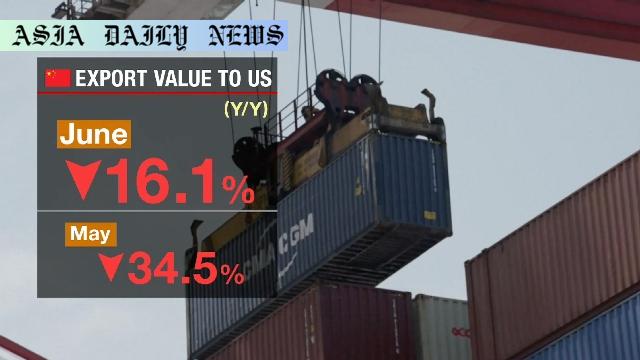China-US Trade continues to slow, recovering from a steeper fall observed in May, as negotiations over tariffs heat up.

China’s Export Recovery in June: A Deeper Dive
China’s trade relationship with the United States remained under pressure in June, yet signs of recovery emerged as exporters rushed to meet deadlines under the existing tariff framework. The export decline to the US, reported to have fallen 16.1% year-on-year in dollar terms, revealed a significant improvement from the 34.5% plunge observed in May. This uptick comes amid ongoing negotiations between Washington and Beijing, aimed at addressing their ongoing trade disputes.
Chinese customs authorities observed that US-bound shipments grew as exporters attempted to circumvent newly proposed tariffs. The decision to temporarily cut additional tariffs in mid-May seems to have facilitated this partial recovery. Despite the progress, the situation remains precarious as trade negotiations continue and new tariffs loom on the horizon. With goods flowing out before the upcoming mid-August deadline, future trade scenarios remain uncertain.
Overall Trade Trends Amid China-US Tensions
Despite the challenges posed by US relations, China’s broader trade patterns showcased resilience. Overall exports grew by 5.8% in June, driven largely by increased shipments to Southeast Asia and Europe. Imports from the US also fell by 15.5%, a smaller decline compared to the previous month, indicating some stabilization in trade dynamics. However, a key facet of China’s trade strategy—shipping components to Southeast Asia for assembly before sending the finished goods to the US—is now under threat due to new US tariffs targeting economies in the region, set to take effect on August 1.
With such strategies in flux, Chinese firms must reconsider their supply chain routes amidst an increasingly protectionist global trade environment. These circumstances underscore a need for adaptability in trade policies and strategic partnerships, as well as innovations to maintain competitiveness. Southeast Asia, a pivotal intermediary in trade, might face heavier impacts from these measures, potentially reshaping global trade flows in unforeseen ways.
Ongoing Negotiations and Future Perspectives
The stakes for resolving China-US trade disagreements have never been higher, especially as both nations continue to endure economic repercussions stemming from protracted tariff disputes. China, leveraging strong partnerships with nations like those in Southeast Asia and Europe, has sought new markets to balance the impact of declining US trade. However, the threat of new tariffs on regional economies could disrupt these adjustments.
For many Chinese exporters, the mid-August deadline provides a race against time to finalize shipments. As Washington and Beijing aim for a 90-day negotiating window, any agreement reached will significantly influence not only bilateral trade but also global supply chains. Stakeholders in economic and industrial sectors worldwide will undoubtedly monitor these developments with keen interest, as any changes are likely to have far-reaching implications.
Commentary
China-US Trade: Looking Beneath the Surface
The complexities of the China-US trade rift have brought about significant shifts in global economic patterns. While a 16.1% drop in China’s exports to the US might sound alarming, it also represents a noteworthy recovery from May’s nosedive. This improvement suggests that exporters are maneuvering to adapt to unpredictable tariffs and regulations, though the future remains uncertain and fraught with challenges.
The Impact of Tariff Strategy on Global Trade
China’s strategic reliance on Southeast Asia for assembly-line processes highlights the evolving global trade network. As new US tariffs targeting major economies in the region threaten to disrupt these routes, exporters are likely to face an increasingly challenging environment. This additional pressure could force not only China but also its regional partners to rethink logistics, supply chains, and trade partnerships. Ultimately, these developments could reshape the global trade paradigm in significant ways.
Future Opportunities Amid Trade Tensions
Despite the challenges, this transitional period in global trade offers opportunities for innovation, collaboration, and diversification. Chinese firms, if able to innovate and develop alternative trade routes or expand to new markets, could turn short-term challenges into long-term gains. Furthermore, major global economies, including the US, should recognize the importance of cooperative policies to stabilize and sustain the world economy. Thoughtful negotiation between nations, supported by multi-lateral collaboration, can pave the way for a more balanced and productive future.


